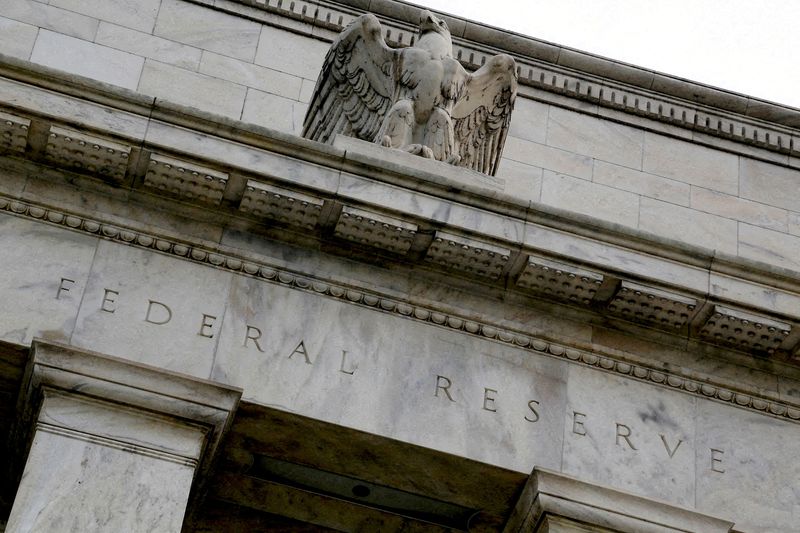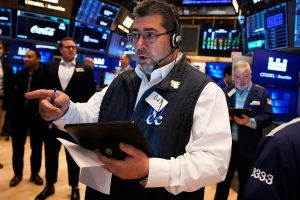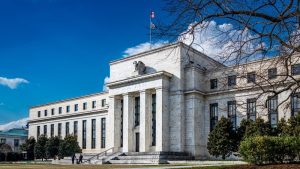
By Ann Saphir
(Reuters) -Federal Reserve policymakers have signaled that short-term interest rates will remain unchanged as they wait for clearer signs that inflation is nearing the U.S. central bank’s 2% goal or until there is a whiff of a deteriorating job market.
The data so far has presented neither of those scenarios to the Fed, and though economists say the real drag from President Donald Trump’s aggressive import tariffs lies ahead, there is a great amount of uncertainty over where the policies will end up and the degree and timing of their impact on prices and jobs.
“The cone of possibilities,” as Cleveland Fed President Beth Hammack put it recently, is quite large, and includes the possibility of persistently higher inflation coupled with a slowdown in economic activity that would require the central bank to pick which battle to fight.
That dilemma has not stopped traders from betting that by June a faltering economy will likely move the Fed to resume its rate cuts, ultimately lowering borrowing costs by a full percentage point by the end of this year. They added to those bets on Wednesday after data showed the U.S. economy shrank last quarter and the Fed’s preferred measure of price inflation did not rise at all on a monthly basis in March.
But while economists say such a rate-cutting scenario is not out of the question, they are quick to note that inflation remains elevated, and is likely to worsen at least temporarily as retailers raise prices to cover higher costs from the sharp increase in import levies.
The Personal Consumption Expenditures Price Index excluding volatile food and energy prices, which Fed officials feel maps best to where inflation is headed, eased to 2.6% in March from 3% in February, the data showed.
Longer-term inflation expectations remain largely grounded, but a few Fed policymakers have taken note of a sharp rise in short-term inflation expectations that they worry could set the stage for a resurgence in price pressures.
“The Fed’s in a very tricky spot; you have inflation that is already above target, you have inflation expectations that are, sort of showing that, perhaps they’re becoming a little unhinged,” said Tom Porcelli, chief U.S. economist at PGIM Fixed Income. “And we’re now waiting for the inflation to show up on the back of tariffs. I mean, the Fed is on hold.”
At the same time, Fed policymakers are keenly focused on the potential for tariffs to slow the economy and potentially trigger layoffs, a situation that in the absence of persistent inflation would move them to cut rates, perhaps sharply. That’s not evident so far.

